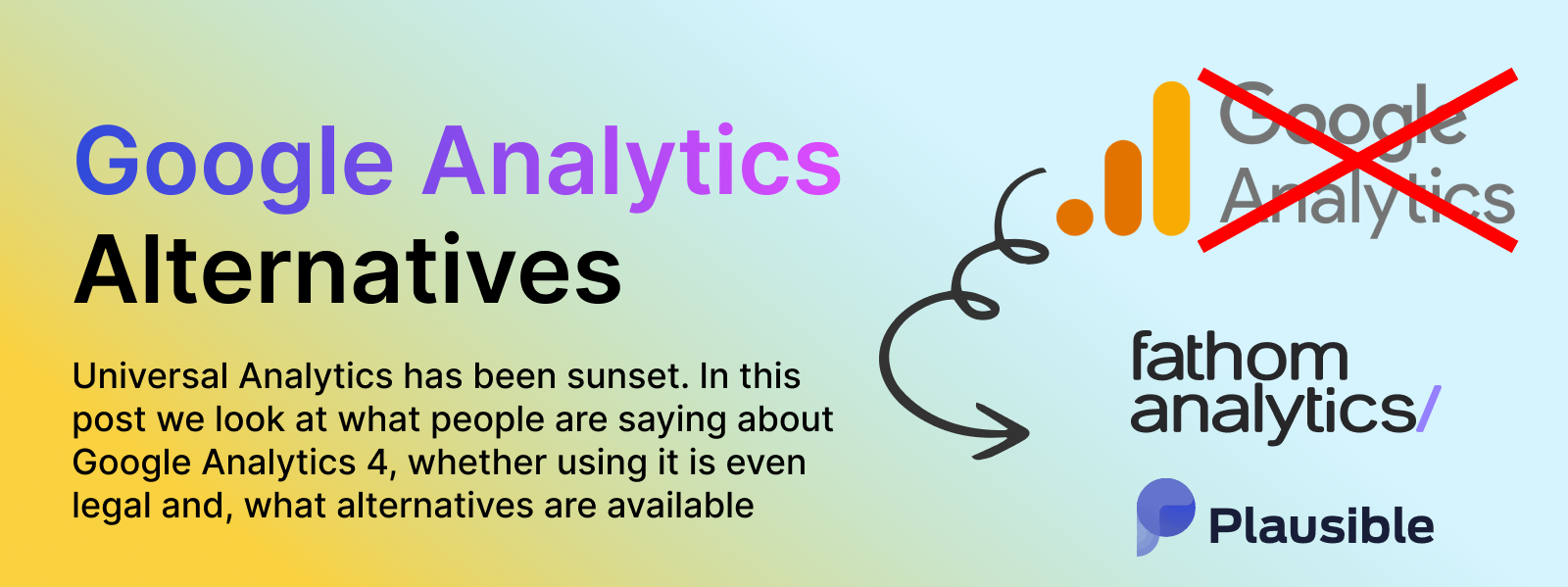What is Customer Lifecycle Marketing?
Customer lifecycle marketing is a strategic approach centered around building relationships with customers throughout their entire journey with your business. Instead of generic marketing blasts, this approach involves tailoring messages and offers based on each customer's individual progress. Think of it like nurturing a plant: a seedling requires different care than a mature plant. Similarly, a new customer has different needs than a loyal, long-term one. This personalized approach recognizes that customer needs and preferences evolve. Understanding these changes is the cornerstone of effective customer lifecycle marketing.
Why is Customer Lifecycle Marketing Important?
The foundation of customer lifecycle marketing lies in understanding the customer journey. This understanding allows you to anticipate their needs and provide relevant information and offers at precisely the right moment. For instance, a new customer might be seeking educational content about your products. Conversely, a repeat customer might be more interested in exclusive deals or loyalty programs. Recognizing these distinct needs dramatically improves customer engagement and satisfaction. As a result, you see increased conversions, higher customer lifetime value (CLTV), and, ultimately, greater profitability. In essence, effective customer lifecycle marketing transforms one-time buyers into devoted brand advocates.
How Does Customer Lifecycle Marketing Work?
Customer lifecycle marketing utilizes data and analytics to segment customers into different lifecycle stages. This segmented information is then used to personalize marketing messages across various channels, including email, social media, and website content. Imagine a customer who just subscribed to your newsletter. They are in the early stages of their journey. Customer lifecycle marketing ensures they receive welcome emails with helpful resources and introductory offers. As they interact more with your brand, their needs will naturally shift, triggering different, targeted marketing campaigns. This could involve personalized product recommendations or invitations to exclusive events. Through such targeted messaging, businesses create a better customer experience and guide them towards further brand engagement. This dynamic, adaptable approach ensures the message always aligns with the customer's current needs and interests.
Stages of the Customer Lifecycle

This section explores the various phases of the customer lifecycle, providing a detailed look at how customer lifecycle marketing applies to each stage. Understanding these stages is paramount for implementing a successful customer lifecycle marketing strategy. Just as any relationship progresses through phases, a customer's journey with your brand follows a similar pattern.
Awareness
The awareness stage represents the beginning of the customer journey. Here, potential customers first discover your brand and what it offers. This discovery could happen through search engine results, social media posts, or even word-of-mouth referrals. For example, someone searching online for a solution to a problem might find your blog post offering helpful advice. At this juncture, customer lifecycle marketing focuses on grabbing their attention and sparking their interest. This might involve creating engaging content, running targeted ad campaigns, or optimizing your website for search engines.
Consideration
Once aware of your brand, potential customers move into the consideration stage. They actively evaluate your products or services, compare you to competitors, and research their options. This indicates they’re seeking information that validates your value proposition. Customer lifecycle marketing during this phase aims to provide valuable content that addresses their questions and positions your brand as the ideal solution. This could involve informative webinars, detailed product comparisons, or customer testimonials that showcase positive experiences.
Purchase/Conversion
The purchase stage is the moment of truth, where a potential customer decides to buy and becomes a paying customer. This could mean buying a product, subscribing to a service, or signing up for a free trial. Customer lifecycle marketing here focuses on streamlining the purchase process, removing any friction to make the transaction as smooth as possible. This could include clear calls to action, a simple checkout experience, and personalized offers.
Retention
After a purchase, the emphasis shifts to customer retention. The goal of this stage is to build long-term relationships with existing customers, encouraging repeat business and fostering loyalty. This involves engaging customers through personalized email campaigns, loyalty programs, and exclusive content. For example, a customer who recently bought running shoes might receive emails with tips on improving their running form or exclusive offers on running apparel. Providing ongoing value encourages repeat purchases and builds strong customer relationships.
Advocacy
The final stage, advocacy, is where satisfied customers transform into brand ambassadors, actively recommending your products or services to others. This type of organic promotion is incredibly valuable for attracting new customers. Customer lifecycle marketing at this stage encourages customers to share their positive experiences. This might involve implementing referral programs, soliciting online reviews, or creating opportunities for user-generated content. By nurturing a community of loyal advocates, businesses gain powerful word-of-mouth marketing, further extending their reach. Ultimately, effective customer lifecycle marketing cultivates long-term customer relationships, driving growth and maximizing customer lifetime value.
Benefits of Lifecycle Marketing
Nurturing customers effectively throughout their lifecycle provides several significant advantages. Just as you would provide different care for seedlings versus mature plants, customer lifecycle marketing lets you address the specific needs of each customer segment, fostering growth and maximizing their value to your business. This strategic approach offers several key benefits:
Increased Customer Lifetime Value (CLTV)
By prioritizing the development of long-term relationships, customer lifecycle marketing significantly increases CLTV. This means customers are more likely to make repeat purchases and spend more over time, rather than just making a single purchase. For example, a customer who initially subscribes to a basic software plan might, through targeted content and offers, eventually upgrade to a premium plan, increasing their overall value. This long-term focus directly contributes to revenue growth and business sustainability.
Improved Customer Retention
Customer lifecycle marketing strengthens customer loyalty. By understanding and catering to customer needs at each stage, businesses create a more engaging and personalized experience. This, in turn, fosters a sense of connection and value, making customers more likely to stay. Just as consistent care helps a plant thrive, customers remain loyal when they feel valued and understood. This increased retention rate lowers the cost of acquiring new customers and builds a stable customer base.
Enhanced Customer Engagement
Lifecycle marketing generates deeper customer engagement. Personalized messages and targeted offers resonate more effectively with customers, resulting in increased interaction with your brand. This could manifest as higher open rates for email campaigns, more social media engagement, or more frequent website visits. For example, sending personalized product recommendations based on past purchases keeps customers engaged and encourages further exploration of your products. This consistent interaction solidifies the customer-brand relationship and promotes brand loyalty.
Increased Conversion Rates
Customer lifecycle marketing helps guide potential customers through the sales funnel more efficiently. By delivering the right message at the right time, businesses address specific concerns and objections, increasing the likelihood of conversion. This means your marketing efforts become more focused and effective, yielding a higher return on investment. For example, a well-timed email offering a discount or free shipping could be the final push a potential customer needs to complete a purchase. By optimizing each point of contact in the customer journey, businesses can significantly improve their overall conversion rates. This directly translates to increased sales and revenue growth.
Creating Effective Lifecycle Campaigns

Building a successful customer lifecycle marketing strategy requires a well-defined plan, much like constructing a building requires a solid blueprint. This involves understanding your audience, crafting targeted messages, and choosing the appropriate channels for each lifecycle stage. By following these steps, you can create effective lifecycle campaigns that resonate with your customers and drive results.
1. Define Your Customer Lifecycle Stages
First, clearly define the key stages of your customer lifecycle. These stages may vary based on your business and industry, but often include awareness, consideration, purchase, retention, and advocacy. For a software company, for example, the awareness stage might involve attracting visitors to a blog post discussing project management challenges, while the consideration stage might involve downloading a trial version of their software. Clearly mapping these distinct stages provides the foundation for an effective customer lifecycle marketing campaign.
2. Segment Your Audience
Next, divide your audience into segments based on their current stage in the lifecycle. This allows you to deliver targeted messages that address their specific needs and interests. New customers, for example, might benefit from welcome emails and introductory product guides, while loyal customers might be more interested in exclusive deals and loyalty programs. Segmenting your audience prevents sending generic messages that could be irrelevant or even deter certain customer groups. This precise targeting maximizes the effectiveness of your marketing initiatives.
3. Develop Targeted Content and Offers
Now, create compelling content and offers tailored to each segment. During the awareness stage, this could involve educational blog posts, social media advertisements, or search engine optimized website content. In the consideration stage, you might offer free webinars, product demonstrations, or comparison guides. For existing customers, personalized email campaigns, loyalty programs, and exclusive content can foster retention and encourage repeat purchases. The key is to provide value at each stage, guiding customers along their journey.
4. Choose the Right Channels
Effective customer lifecycle marketing employs a multi-channel approach. However, the effectiveness of each channel varies depending on the customer lifecycle stage. Email marketing is very effective for nurturing leads and engaging existing customers. Social media excels at building brand awareness and fostering community. Paid advertising can target specific customer segments at different stages. For instance, retargeting ads can recapture the interest of customers who abandoned their shopping carts, while social media ads can introduce your brand to potential customers in the awareness stage. Choosing the right channels for each stage is crucial for maximizing reach and impact.
5. Automate Your Campaigns
Automating your customer lifecycle marketing campaigns saves time and ensures timely communication. Marketing automation tools allow you to trigger specific messages based on customer actions or lifecycle stage. A welcome email series, for example, can be automatically sent to new subscribers, while a personalized product recommendation email can be triggered after a purchase. Automation streamlines your marketing efforts and maintains consistent communication throughout the customer lifecycle.
6. Analyze and Optimize
Finally, continuously monitor and analyze the performance of your customer lifecycle marketing campaigns. Track key metrics like conversion rates, customer lifetime value (CLTV), and customer churn. Use this data to identify areas for improvement and optimize your campaigns. Much like a gardener adjusts their watering schedule based on a plant's needs, you should adjust your customer lifecycle marketing strategy based on data insights. This iterative approach ensures your campaigns remain effective and relevant, ultimately driving sustainable business growth. Remember that tools like PureClarity can offer comprehensive conversion rate optimization, providing personalized shopping experiences through AI-powered product recommendations, targeted content, and streamlined user experiences, thus maximizing your customer lifecycle marketing efforts.
Measuring Success
After implementing a customer lifecycle marketing strategy, measuring its success becomes the next critical step. Like a ship's captain using navigational instruments, marketers rely on specific metrics to gauge the effectiveness of their customer lifecycle marketing campaigns. These metrics provide valuable insights into what’s working and what requires adjustment, enabling a data-driven approach to optimization. By tracking the right Key Performance Indicators (KPIs), you can ensure your efforts are yielding positive results and driving business growth.
Key Metrics for Tracking Customer Lifecycle Marketing
- Customer Acquisition Cost (CAC): This metric shows how much it costs to acquire a new customer. A lower CAC indicates efficient marketing spending. Think of it like the cost of seeds for your garden – you want the highest quality at the lowest price. Tracking CAC helps optimize your marketing budget and allocate resources effectively.
- Customer Lifetime Value (CLTV): CLTV represents the total revenue a customer generates throughout their relationship with your business. A high CLTV signifies successful customer lifecycle marketing, as customers are making repeat purchases and increasing their overall spending. Just as a mature fruit tree yields more fruit than a sapling, a high CLTV demonstrates the value of nurturing customer relationships.
- Churn Rate: This metric measures the rate at which customers stop doing business with you. A low churn rate indicates strong customer retention and the effectiveness of your lifecycle marketing in keeping customers engaged. If your garden is thriving, fewer plants will wither. Similarly, a low churn rate shows that your customers are staying engaged with your brand.
- Conversion Rate: The conversion rate measures the percentage of potential customers who complete a desired action, such as making a purchase or subscribing to a newsletter. A high conversion rate demonstrates the effectiveness of your marketing messages in driving specific actions. This is like the percentage of seeds that successfully sprout – a high conversion rate shows your marketing messages are resonating with your target audience.
- Customer Retention Rate: This KPI tracks the percentage of customers who continue doing business with you over a specified period. A high customer retention rate demonstrates that your lifecycle marketing is successfully fostering long-term customer relationships. Just as a well-tended garden retains its plants, a high retention rate reflects strong customer loyalty.
- Average Order Value (AOV): AOV measures the average amount spent per order. Increasing AOV indicates that your lifecycle marketing is effectively encouraging customers to purchase more items or higher-value products. This is similar to increasing the yield from each plant in your garden – a higher AOV shows your marketing efforts are generating greater revenue per customer.
Analyzing and Optimizing Your Results
These metrics aren’t just numbers to collect; they are tools to inform your ongoing customer lifecycle marketing strategy. Regularly analyzing these KPIs provides insights into what is working, what isn't, and where adjustments are needed. For instance, a high CAC might suggest the need to explore more cost-effective marketing channels, while a low conversion rate might indicate the need for more compelling messaging. Tools like PureClarity can provide further insight into customer behavior, enabling you to optimize conversion rates and personalize the shopping experience, ultimately maximizing the effectiveness of your customer lifecycle marketing efforts. By consistently monitoring and analyzing these metrics, you can fine-tune your lifecycle marketing strategy and achieve sustainable business growth. This continual improvement is like a gardener pruning and fertilizing plants to ensure optimal health and yield. Similarly, ongoing analysis and optimization are crucial for a thriving customer lifecycle marketing strategy.
Common Challenges and Solutions
Implementing a successful customer lifecycle marketing strategy is not without its difficulties. Just as a gardener contends with weeds and unpredictable weather, businesses encounter obstacles that can hinder their customer lifecycle marketing efforts. Recognizing these challenges and understanding how to overcome them is crucial for maximizing the impact of your lifecycle marketing strategy. This section explores some common challenges and offers practical solutions for navigating them.
Data Silos and Integration
One common challenge is the existence of data silos. Different departments within a business often collect and store customer data in separate systems. This fragmentation makes it difficult to gain a complete view of the customer journey and personalize marketing messages effectively. Imagine trying to assemble a puzzle with missing pieces – you can’t see the whole picture. Similarly, fragmented data obscures your ability to understand customer behavior and tailor your marketing efforts. The solution lies in integrating these disparate data sources. By implementing a centralized customer relationship management (CRM) system and using data integration tools, businesses can break down these silos and gain a unified view of their customers. This integrated approach empowers businesses to deliver truly personalized experiences that resonate with customers at every touchpoint.
Difficulty in Personalization
Personalizing customer lifecycle marketing campaigns can be complex. It requires segmenting customers into meaningful groups, developing targeted content for each segment, and delivering that content through the right channels at the right time. This is similar to tailoring a suit – it requires precise measurements and a skilled hand to achieve a perfect fit. Likewise, effective personalization demands careful segmentation and targeted messaging. The solution is to use advanced analytics and marketing automation tools. These tools allow businesses to segment customers based on demographics, behavior, purchase history, and other relevant data. This granular segmentation enables businesses to craft personalized messages that address each customer group's specific needs and interests, leading to higher engagement and conversion rates. Tools like PureClarity enhance personalization further by offering AI-driven product recommendations and tailored content, ensuring each customer interaction feels relevant and valuable.
Measuring ROI and Proving Value
Demonstrating the return on investment (ROI) of customer lifecycle marketing can be challenging. It’s not always straightforward to directly link specific marketing activities to revenue growth or other business outcomes. This is like trying to measure the impact of individual nutrients on a plant’s growth – it's a complex and multi-faceted process. Similarly, measuring the ROI of customer lifecycle marketing requires a nuanced approach. The solution is to establish clear KPIs and track them diligently. Metrics such as CAC, CLTV, churn rate, conversion rate, and customer retention rate provide quantifiable data that demonstrate the effectiveness of your lifecycle marketing efforts. This data-driven approach allows businesses to showcase the value of their lifecycle marketing strategy and justify continued investment in these initiatives. Furthermore, analyzing data within a platform like PureClarity offers detailed insights into customer behavior, allowing for further optimization and maximizing marketing ROI.
Maintaining Consistency Across Channels
Delivering a consistent customer experience across all channels – email, social media, website, mobile app, etc. – can be difficult. Customers expect a seamless experience regardless of how they interact with your brand. This means your messaging, branding, and overall customer experience must align across all touchpoints. Think of it like an orchestra – each instrument must play in harmony to create a beautiful symphony. Similarly, consistent branding and messaging are essential for a harmonious customer experience. The solution is to develop a comprehensive brand style guide and ensure all marketing materials adhere to it. This involves using consistent visuals, messaging, and tone of voice across all channels. This unified approach creates a seamless and cohesive brand experience for your customers, strengthening brand recognition and fostering loyalty.
By acknowledging and proactively addressing these common challenges, businesses can effectively implement customer lifecycle marketing strategies that drive customer engagement, increase conversions, and maximize customer lifetime value. This is similar to a skilled gardener who, through understanding challenges and employing the right techniques, cultivates a thriving and fruitful garden. Likewise, overcoming obstacles in customer lifecycle marketing allows businesses to nurture strong customer relationships and reap the rewards of long-term loyalty.
Future of Customer Lifecycle Marketing

Having examined the core components of customer lifecycle marketing, it’s essential to look ahead. The field is constantly changing, driven by technological advancements and evolving consumer expectations. Staying ahead of the curve is critical for businesses looking to maximize the effectiveness of their customer lifecycle marketing strategies. Understanding future trends enables adaptation and success in the ever-changing marketing environment. This section explores the key trends shaping the future of customer lifecycle marketing.
Hyper-Personalization through AI
The future of customer lifecycle marketing will be defined by hyper-personalization. This goes far beyond simply addressing customers by their names. AI and machine learning are becoming increasingly sophisticated at analyzing customer data, allowing businesses to create exceptionally tailored experiences. Imagine a clothing retailer using AI to predict a customer's preferred styles and sizes based on their browsing history and previous purchases. This level of personalization strengthens customer connections and increases the likelihood of conversion. AI can also automate personalized product recommendations, targeted content, and email campaigns, making customer lifecycle marketing more efficient and scalable.
The Rise of Omnichannel Experiences
Customers interact with brands across numerous touchpoints—websites, social media, email, mobile apps, physical stores, and more. Creating a seamless and integrated omnichannel experience is therefore becoming increasingly vital. This means that no matter how a customer chooses to interact with your brand, the experience should be consistent and personalized. For example, a customer browsing products on their phone should be able to seamlessly continue their shopping experience on their computer, with their cart and browsing history synchronized across devices. This cohesive omnichannel approach strengthens brand loyalty and fosters deeper customer connections.
Focus on Customer Privacy and Data Security
As consumers become more aware of data privacy, businesses must prioritize ethical data collection and transparent data usage. Building and maintaining customer trust is paramount. This means being transparent about how customer data is collected and used, providing clear opt-in/opt-out options, and ensuring the security of customer information is essential for building and preserving customer trust. This commitment to data privacy instills confidence and fosters long-term customer relationships.
Real-Time Engagement and Automation
Real-time interaction is becoming increasingly important in customer lifecycle marketing. This means responding to customer inquiries instantly, providing immediate support, offering personalized recommendations in the moment, and tailoring content based on real-time behavior. Automation plays a critical role in facilitating this immediacy. Chatbots, for example, can provide instant customer support, while automated email campaigns can trigger personalized messages based on specific customer actions. This real-time engagement creates a more dynamic and responsive customer experience, further strengthening customer relationships.
Customer lifecycle marketing is not just about gaining new customers; it’s about building lasting relationships that drive sustainable business growth. By embracing these future trends and constantly adapting to the changing marketing landscape, businesses can unlock the full potential of customer lifecycle marketing and cultivate a loyal and engaged customer base. Tools like PureClarity can facilitate this, offering AI-powered personalization, seamless integrations, and real-time analytics to empower your customer lifecycle marketing efforts. Explore PureClarity today and discover how it can transform your customer relationships and propel business success. Learn more about PureClarity






